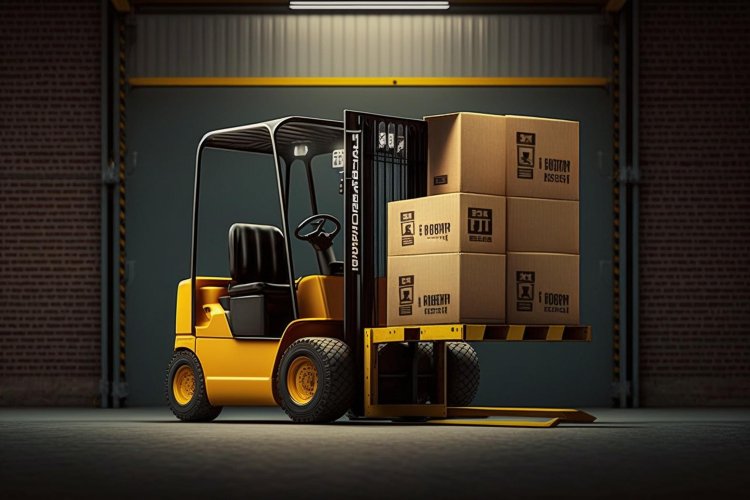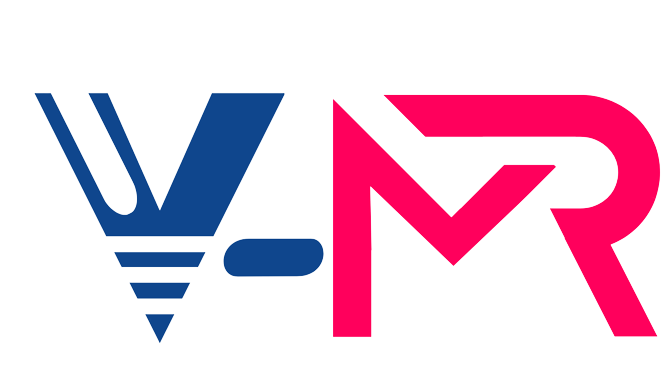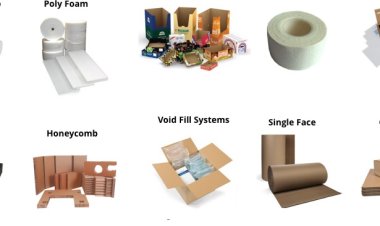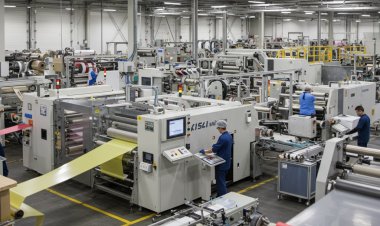Global Forklift Market Size to Reach $97.7 Billion at a CAGR of 7.2% by 2030
Vantage Market Research expects the Forklift Market to reach USD 97.7 Billion by 2030, exhibiting a growth rate (CAGR) of 7.2% during 2023-2030.

The Global Forklift Market size reached USD 55.9 Billion in 2022. Vantage Market Research expects the market to reach USD 97.7 Billion by 2030, exhibiting a growth rate (CAGR) of 7.2% during 2023-2030.
Table of Contents
|
Introduction |
|
· Forklifts: From Unsung Heroes to Industry Mainstays |
|
· Evolution Driven by Diverse Industry Demands |
|
· Exploring the Changing Landscape of Forklifts |
|
The Dominance of Asia Pacific |
|
· Epicenter of Innovation: Manufacturing & Logistics Boom |
|
· Robust Growth: China, India, and Japan Lead the Way |
|
· Forklift Market: Poised for Continued Dominance |
|
Types of Forklifts |
|
· Warehouse Forklifts: Kings of Pallets & Loading (Hyster, Komatsu, Toyota) |
|
· Side Loaders & Counterbalance Forklifts: Specialized Solutions |
|
· Heavy-Duty Forklifts: Lifting Heavy, Reaching High (NACCO, Mitsubishi) |
|
Classifications of Forklifts |
|
· Class I - Electric Indoor: Air Quality First |
|
· Class II - Electric Tight Spaces: Warehouses & Aisles |
|
· Class III - Electric & Manual Movement: Powered Pallet Jacks |
|
· Class IV - Gas/Diesel Outdoor: Cushion Tires for Smooth Surfaces |
|
· Class V - Gas/Diesel Outdoor: Pneumatic Tires for Uneven Terrain |
|
Fields of Application |
|
· Paper Industry: Carer's Forklifts - Stability & Productivity |
|
· Automotive: Assembly & Warehousing - Reliability & Compact Design |
|
· Ports & Logistics: Efficient & Eco-Friendly Container Handling |
|
· Iron & Steel Industry: Electric Forklifts - Environment & Economy |
|
· Wood Industry: Space Utilization, Height Handling, & Cost Savings |
|
Forklift Benefits |
|
· Effortless Material Movement: Reduced Labor & Saved Time |
|
· Flexibility: Efficient Transport in Diverse Settings |
|
· Enhanced Safety: Improved Worker Well-being & Productivity |
|
Going Green with Electric Forklifts |
|
· Sustainability Gains Momentum: Reduced Emissions & Efficiency |
|
· Industry-Wide Recognition: Long-Term Benefits & Responsibility |
|
Conclusion |
|
· Forklifts: Adapting & Thriving in a Changing Landscape |
|
· From Warehouses to Diverse Sectors: Embracing Technology & Sustainability |
|
· The Indispensable Ally: A Journey of Innovation & Responsibility |
Introduction
Forklifts, the unsung heroes of modern warehouses and construction sites, have evolved significantly to meet the demands of diverse industries. From the bustling manufacturing hubs of Asia Pacific to the intricacies of the paper, automotive, ports, and steel industries, Forklifts play a pivotal role in material handling. This blog explores the changing landscape of Forklifts, the various types, their applications, and the shift toward environmental sustainability with the adoption of electric Forklifts.
Request Sample Report of Forklift Market @ https://www.vantagemarketresearch.com/forklift-market-2369/request-sample
Top Companies in Global Forklift Market
- Mitsubishi Logisnext Co. Ltd. (Japan)
- KION Group AG (Germany)
- Toyota Material Handling (U.S.)
- Jungheinrich AG (Germany)
- Komatsu Ltd. (Japan)
- Hangcha Forklift (China)
- Crown Equipment Corporation (U.S.)
- Hyster-Yale Materials Handling Inc. (U.S.)
- Doosan Corporation (South Korea)
The Dominance of Asia Pacific
The Asia Pacific region is the epicenter of Forklift innovation, driven by robust growth in the manufacturing and logistics industries, notably in China, India, and Japan. This surge in economic activities is a crucial driver for the heightened demand for advanced material handling equipment. The region’s Forklift market is poised to maintain its dominance, reflecting the growing need for efficient and versatile solutions in these dynamic markets.
Types of Forklifts
Warehouse Forklifts
The warehouse Forklift, a familiar sight resembling a golf cart with twin forks, excels in loading and unloading pallets. Popular models include the Hyster 36-38T, Komatsu 20 BX50 Hyster, and the Toyota 3-Wheel Electric Forklift.
Side Loaders and Counterbalance Forklifts
Side loaders, a subtype of warehouse Forklifts, are adept at handling long and bulky items. Counterbalance Forklifts, with weight at the back to counterbalance loads, come in various types, such as the 3-wheel variant and stand-up counterbalance Forklifts.
Heavy-Duty Forklifts
These large-capacity Forklifts combine warehouse functionalities with telehandler capabilities, lifting heavier loads to greater heights. Manufacturers like NACCO Industries and Mitsubishi produce models with impressive capacities, reaching up to 100,000 lbs.
Classifications of Forklifts
Class I Forklifts, powered by batteries, find application in indoor settings, prioritizing air quality. Class II battery-operated Forklifts operate within tight spaces like warehouse aisles. Class III Forklifts, manual in movement but electrically controlled for lifting, include powered pallet jacks. Class IV Forklifts, operating on gas or diesel, are unsuitable for indoor use due to emissions. They use cushion tires for smooth surfaces. Class V Forklifts, similar to Class IV but with pneumatic tires, offer shock absorption suitable for uneven terrains.
Fields of Application
Paper Industry
Carer’s Forklifts shine in the paper industry, efficiently handling large and heavy reels with stability and productivity, even in confined spaces.
Automotive
Leading automotive groups choose Carer’s large-capacity electric Forklifts for assembly chains and warehouse operations, emphasizing reliability, compact design, and productivity.
Ports & Logistic Centers
Carer stands out with electric Forklifts that fully enter containers, ensuring eco-friendly, high-performance solutions for ports and logistics centers.
Iron and Steel Industry
In challenging environments like steel plants and foundries, electric Forklifts offer environmental and economic benefits while efficiently handling heavy loads.
Wood
Carer’s electric Forklifts excel in the wood industry, providing optimal results in space utilization, height handling, and cost savings.
Buy Now Our Forklift Industry Report @ https://www.vantagemarketresearch.com/buy-now/forklift-market-2369/0
Forklift Benefits
- Effortless Material Movement: Forklifts easily handle heavy loads, reducing manual labor and saving time.
- Flexibility: Forklifts navigate through narrow aisles and corners in warehouses, ensuring efficient transport in diverse settings.
- Enhanced Safety: Compared to traditional lifting methods, Forklifts improve safety, reducing injuries and enhancing productivity.
Going Green with Electric Forklifts
The shift to electric Forklifts is gaining momentum in a world increasingly conscious of environmental impact. Businesses across industries recognize the benefits of reduced emissions, improved efficiency, and the long-term sustainability of electric Forklifts.
Conclusion
As industries evolve, so do the tools that support their operations. Forklifts, once confined to warehouses, now play critical roles across various sectors, embracing technological advancements and environmental considerations. The journey from traditional Forklifts to electric counterparts reflects a commitment to efficiency and responsibility towards a sustainable future. In its many forms, the Forklift continues to be an indispensable ally, adapting to the ever-changing landscape of industry needs.
Read Our Latest Press Release: Lingerie Market - In-depth Analysis
Contact us
Eric Kunz
6218 Georgia Avenue NW Ste 1 - 564
Washington DC 20011-5125
United States Tel: +1 202 380 9727
Email: [email protected]
Website: Vantage Market Research


















